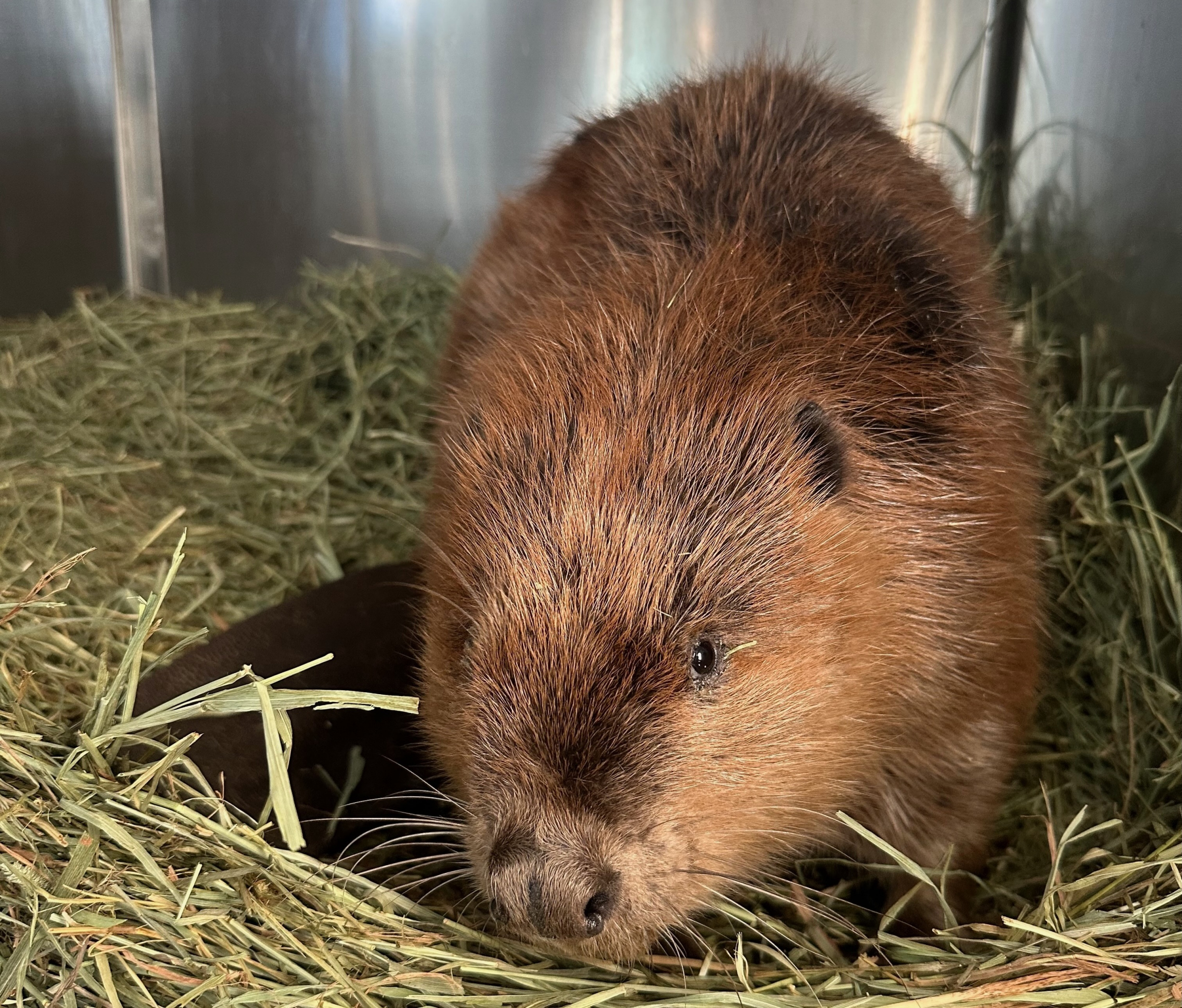
A beaver that is recolonizing the Matadero Creek in Palo Alto was taken to the Wildlife Center of Silicon Valley on Wednesday after being spotted immobile in a pile of leaves, officials said.
Palo Alto Animal Control Supervisor Cody Macartney said a pedestrian found the adult female beaver in a concrete channel of lower Matadero Creek near the former Fry’s Electronics site, and reported it to Palo Alto Animal Control. The animal, who likely made her way to the channel from the wetlands, wasn’t moving and looked as though she didn’t feel well, Macartney said.
Macartney took a photo of the beaver and sent it to the wildlife center, which confirmed that its behavior wasn’t normal.
“She was so unaware of my presence that it wasn’t too hard to capture her,” Macartney said, but he did have a little trouble getting the beaver into a carrier and into his truck –– given that the animal weighed more than 60 pounds. He transported her to the wildlife center, where she was found to be extremely lethargic and hypothermic, Ashley Kinney, the wildlife center’s hospital manager, said.
Kinney said the wildlife center kept the beaver warm in an insulated enclosure and gave her fluids, antibiotics and vitamins.
“As of this morning she is eating and walking around,” Kinney said on Friday, Dec. 1.
Officials don’t know the beaver’s age, but did say she is a large animal, weighing 63 pounds.
“She’s a big girl,” Kinney said, a sign that the semi-aquatic animal is finding an adequate food source.
The wildlife center is currently working on getting a fecal sample from the beaver to check for internal parasites and get a better diagnosis of why she became ill. The beaver’s coat, which is usually oily to help insulate her in the water, was also dry and might be a reason she became hypothermic in the chilly creek and wetlands, Kinney said.
Once she is stabilized, the beaver will be transported to a specialized center in Sonoma where she will continue her rehabilitation until she eventually returns to the channel and wetlands.
The beaver’s presence is an exciting event for Palo Alto and wildlife experts. Beavers haven’t been present in Palo Alto wetlands for more than 160 years, Dr. Rick Lanman, executive director of the Los Altos-based Institute for Historical Ecology, said.
Lanman and his co-authors published the first proof that beavers were native to local coastal watersheds based on a beaver skull he found in the Smithsonian National Museum of Natural History that was collected from Saratoga Creek in 1855.
“Until our 2021 publication beavers were thought not to utilize coastal watersheds (the creeks that flow into SF Bay are considered coastal as the Bay is saltwater),” he said in an email to this publication.
The California Department of Fish and Wildlife relocated local beavers to the Lexington Reservoir and upper Los Gatos Creek in about 1980, and they have since expanded their range down Los Gatos Creek into Silicon Valley, reaching the Guadalupe River and into the South Bay. They have used the South Bay to find other tributaries, gradually moving north.
Baylands gray fox researcher Bill Leikam found the first evidence that beavers were returning to Matadero Creek in 2022 after recording a pair on a wildlife camera.
“The Palo Alto Baylands are a remarkable but narrow strip of protected habitat between Highway 101 and San Francisco Bay. Bill is the expert on gray fox thanks to his years of studying them in the Baylands. But they are barely hanging on to this narrow strip of habitat, as are the newly arrived beaver. We have to work hard to enable wildlife to move up our streams and these concrete channels are a dangerous road,” he said.
The discovery was a hopeful sign that the beavers might have offspring and continue to colonize the area and perhaps spread into San Francisquito Creek and San Mateo County, Lanman told this publication in a previous interview.
“The concrete-channelized lower reaches of our streams, as is the case for Matadero Creek and Adobe Creek, designed for flood control, are deadly traps for animals. There is no cover for the baby beaver to hide predators from coyotes and puma to owls and hawks. I think the young beaver likely pulled leaves together for cover, and possibly as a small dam to raise the water level to hide within,” he said.
